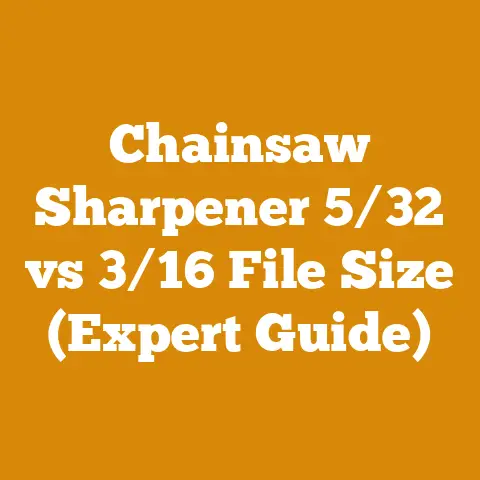How Many Cu Ft in a Cord of Wood? (5 Pro Tips for Accuracy)
I grew up in the Pacific Northwest, surrounded by towering Douglas firs and the ever-present scent of freshly cut wood. My grandfather, a logger since he was a teenager, instilled in me a deep respect for the forest and the art of turning trees into usable lumber and firewood. One of the first lessons he taught me was the importance of understanding volume, particularly when dealing with firewood. “Knowing how many cubic feet are in a cord,” he’d say, his voice raspy from years of shouting over the roar of chainsaws, “is knowing you’re getting what you pay for, or delivering what you promise.” This article is born from that foundational knowledge, combined with years of hands-on experience in wood processing and firewood preparation. I’ll share my insights, pro tips, and a few stories along the way to help you accurately calculate and understand the volume of a cord of wood. This isn’t just about numbers; it’s about fair deals, efficient use of resources, and a deeper connection to the wood we work with.
How Many Cu Ft in a Cord of Wood? (5 Pro Tips for Accuracy)
Understanding the volume of a cord of wood is crucial whether you’re buying, selling, or simply preparing firewood for your own use. It’s the standard unit for measuring firewood, but accurately determining the cubic feet within a cord can be trickier than it seems. This guide will walk you through the essential concepts, providing practical tips and tricks to ensure you get the most accurate measurement possible.
What Exactly Is a Cord of Wood?
Let’s start with the basics. A “cord” of wood is defined as a neatly stacked pile measuring 4 feet high, 4 feet wide, and 8 feet long. This equates to a total volume of 128 cubic feet (4 ft x 4 ft x 8 ft = 128 cu ft). However, here’s the catch: that 128 cubic feet includes the wood and the air spaces between the logs. This is where the “apparent volume” differs from the “actual wood volume.”
Key Definitions:
- Cord: A standard unit of measure for firewood, defined as a stack 4′ x 4′ x 8′ (128 cubic feet).
- Face Cord (or Rick): A stack of wood that is 4 feet high and 8 feet long, but the width (depth) is shorter than 4 feet. The volume varies depending on the length of the pieces. This is often misrepresented as a full cord, so be cautious!
- Cubic Foot: A unit of volume equal to a cube with sides one foot in length.
- Apparent Volume: The total volume of a stack of wood, including both the wood and the air spaces. This is the 128 cubic feet of a full cord.
- Actual Wood Volume: The volume of wood itself, excluding the air spaces. This is significantly less than the apparent volume.
- Green Wood: Freshly cut wood with high moisture content.
- Seasoned Wood: Wood that has been allowed to dry, reducing its moisture content. Seasoned wood burns more efficiently.
Why is Accuracy Important?
Accuracy is paramount for several reasons:
- Fair Pricing: As a buyer, you want to ensure you’re getting the amount of wood you’re paying for. As a seller, you need to accurately represent the quantity you’re offering.
- Efficient Storage: Knowing the true volume helps you plan your storage space effectively.
- Consistent Burning: Understanding volume helps you estimate how much wood you’ll need for heating over a specific period, avoiding unnecessary trips to the wood pile in the dead of winter. I remember one particularly harsh winter where I underestimated my firewood needs. Let’s just say I learned a valuable lesson about accurate estimation, and the importance of having a good maul for splitting frozen wood!
- Legal Compliance: In some regions, firewood sales are regulated, requiring accurate measurement and disclosure of volume.
The Reality of Air Space: Actual Wood Volume
While a cord has an apparent volume of 128 cubic feet, the actual wood volume is considerably less. The air gaps between the logs significantly reduce the amount of solid wood. Generally, the actual wood volume in a cord ranges from 60 to 80 cubic feet. This variance depends on several factors:
- Log Straightness: Straighter logs create fewer gaps.
- Log Diameter: Smaller, irregularly shaped pieces create more gaps.
- Stacking Method: A tightly and carefully stacked cord will have less air space than a loosely thrown pile.
- Bark Thickness: Thick bark increases the overall volume without contributing much to the actual wood content.
Pro Tip: When purchasing firewood, ask the seller about the average log diameter and the stacking method used. This will give you a better idea of the actual wood volume.
5 Pro Tips for Accurate Cord Measurement
Here are my top 5 tips for accurately assessing the volume of a cord of wood, based on years of experience.
1. The “String Test” and Visual Assessment
Before accepting a delivery or cutting your own wood, perform a visual inspection. A good seller will have a neatly stacked cord that adheres to the 4′ x 4′ x 8′ dimensions. However, a quick “string test” can reveal discrepancies.
- The String Test: Stretch a string or measuring tape along the top and bottom edges of the stack. This will highlight any bowing or irregularities in the stack, revealing if the advertised dimensions are accurate. I once received a “cord” of wood where the stack bowed inwards significantly. The string test revealed that I was missing about 10 cubic feet of wood!
- Visual Assessment: Look for consistent log lengths and a tight stacking pattern. Are the logs relatively straight? Are there excessive gaps? Are there a lot of small, oddly shaped pieces? These factors will influence the actual wood volume.
Tool Specification: A simple 100-foot measuring tape and a length of sturdy string are all you need.
2. Calculate the Face Cord (Rick) and Convert
Often, firewood is sold by the “face cord” or “rick,” which is essentially a portion of a full cord. Remember, a face cord is 4 feet high and 8 feet long, but the width can vary. To determine the equivalent volume of a face cord in terms of a full cord, you need to measure the length of the wood pieces.
Formula:
- (Length of wood pieces in feet) / 4 feet = Fraction of a full cord.
Example:
If the wood pieces are 16 inches (1.33 feet) long:
- 1.33 feet / 4 feet = 0.33
This means that a face cord with 16-inch pieces is equivalent to 0.33 of a full cord. To calculate the cubic footage, multiply 0.33 by 128 cubic feet (the volume of a full cord):
- 0.33 x 128 cubic feet = 42.24 cubic feet.
Case Study: I once helped a friend calculate the true cost of firewood he was buying by the rick. He was paying $150 per rick, with the wood pieces being 18 inches long. After doing the math, we discovered he was effectively paying $576 for a full cord equivalent. By comparing this price to other local vendors selling full cords, he realized he was overpaying significantly!
Strategic Advantage: Understanding the face cord conversion allows you to compare prices from different sellers and ensure you’re getting the best deal.
3. The “Average Diameter” Method (Advanced)
This method is more involved but provides a more accurate estimate of the actual wood volume. It involves measuring the diameter of a representative sample of logs.
Steps:
- Select a Sample: Choose 10-15 logs randomly from the stack.
- Measure Diameters: Measure the diameter of each log at the midpoint.
- Calculate Average Diameter: Sum the diameters and divide by the number of logs.
- Estimate Volume per Log: Use the average diameter and the log length to estimate the volume of each log (treat it as a cylinder). The formula for the volume of a cylinder is πr²h, where r is the radius (half the diameter) and h is the height (log length).
- Multiply by Log Count: Estimate the total number of logs in the cord. Then, multiply the average volume per log by the total number of logs. This will give you an estimate of the actual wood volume.
Example:
Let’s say you have an average log diameter of 8 inches (0.67 feet) and a log length of 4 feet.
- Radius: 0.67 feet / 2 = 0.335 feet
- Volume per Log: π * (0.335 feet)² * 4 feet = 1.41 cubic feet.
- Estimated Log Count: Let’s say you estimate there are 50 logs in the cord.
- Estimated Actual Wood Volume: 1.41 cubic feet/log * 50 logs = 70.5 cubic feet.
Tool Specification: A measuring tape, a calculator, and a notebook to record measurements.
Benefit: This method provides a more accurate estimate of the actual wood volume compared to simply relying on the overall dimensions of the stack.
4. Account for Wood Type and Moisture Content
The type of wood and its moisture content significantly affect its weight and burning characteristics. While they don’t directly change the volume of a cord, they influence the value and how efficiently it burns.
- Wood Type: Hardwoods like oak, maple, and ash are denser and provide more heat per cubic foot than softwoods like pine and fir.
- Moisture Content: Green wood (freshly cut) has a high moisture content (often 50% or higher), making it difficult to burn efficiently. Seasoned wood (dried for 6-12 months) has a lower moisture content (ideally below 20%), resulting in cleaner, hotter burns.
Pro Tip: Always ask about the wood type and moisture content. A cord of seasoned hardwood is worth significantly more than a cord of green softwood.
Drying Methods:
- Air Drying: The most common method. Stack the wood loosely in a sunny, well-ventilated area. Allow 6-12 months for hardwoods and 3-6 months for softwoods.
- Kiln Drying: A faster method that uses controlled heat to dry the wood. Kiln-dried wood is typically more expensive but burns more efficiently.
Material Specs: Aim for a moisture content below 20% for optimal burning. Use a wood moisture meter to check the moisture content before burning.
Strategic Advantage: Knowing the wood type and moisture content allows you to make informed decisions about firewood purchases and burning practices.
5. The “Negotiation Tactic”: Adjusting for Imperfections
If you’re buying firewood and notice imperfections in the stack (excessive gaps, uneven log lengths, etc.), don’t hesitate to negotiate with the seller. Most reputable sellers are willing to adjust the price to reflect the actual amount of usable wood.
Negotiation Strategies:
- Point Out Specific Issues: Clearly and politely point out the specific issues you’ve identified (e.g., “I noticed there are a lot of small, irregularly shaped pieces, which will reduce the actual wood volume”).
- Suggest a Price Adjustment: Based on your assessment, suggest a fair price adjustment. For example, if you estimate that the cord is missing 10-15 cubic feet of wood, ask for a discount proportional to that amount.
- Be Prepared to Walk Away: If the seller is unwilling to negotiate, be prepared to walk away. There are plenty of other firewood vendors who are willing to provide a fair deal.
Personal Experience: I once negotiated a 15% discount on a cord of wood because the logs were significantly shorter than advertised. The seller initially resisted, but after I showed him the measurements, he agreed to the discount.
Ethical Considerations: While it’s important to get a fair deal, it’s also important to be respectful and ethical in your negotiations. Don’t try to take advantage of the seller, and be willing to pay a fair price for the wood you receive.
Safety Considerations for Firewood Preparation
Whether you’re felling trees, splitting logs, or stacking firewood, safety should always be your top priority.
- Chainsaw Safety:
- Always wear appropriate personal protective equipment (PPE), including a helmet, eye protection, hearing protection, gloves, and chainsaw chaps.
- Maintain your chainsaw properly, ensuring the chain is sharp and the safety features are functioning correctly.
- Use proper felling techniques to avoid kickback and other hazards.
- Never operate a chainsaw when you’re tired or under the influence of drugs or alcohol.
- Splitting Wood:
- Use a sturdy splitting block and a sharp axe or maul.
- Keep your feet firmly planted and maintain a safe distance from others.
- Consider using a hydraulic log splitter for larger logs or if you have back problems.
- Stacking Firewood:
- Lift with your legs, not your back.
- Wear gloves to protect your hands.
- Stack the wood in a stable and secure manner to prevent it from falling over.
Tool Specifications:
- Chainsaw: Select a chainsaw appropriate for the size of the trees you’re felling. Consider features like anti-vibration systems and chain brakes. My preference is a Stihl MS 261 for its balance of power and weight.
- Axe/Maul: Choose an axe or maul with a weight and handle length that you can comfortably control. A splitting maul with a fiberglass handle is a good choice for splitting larger logs.
- Hydraulic Log Splitter: Consider a hydraulic log splitter if you’re splitting large quantities of wood or if you have back problems. Choose a model with sufficient tonnage for the size of the logs you’re splitting. I’ve found a 25-ton splitter to be adequate for most firewood needs.
Strategic Insights: Maximizing Firewood Efficiency
Beyond accurate measurement, there are several strategic considerations to maximize your firewood efficiency:
- Wood Selection: Choose hardwoods over softwoods for higher heat output.
- Seasoning: Properly season your wood to reduce moisture content and improve burning efficiency.
- Storage: Store your firewood in a dry, well-ventilated area to prevent rot and insect infestation.
- Burning Practices: Use a wood stove or fireplace insert to improve heat efficiency.
- Maintenance: Regularly clean your chimney to prevent creosote buildup, which can cause chimney fires.
Cost Analysis: Investing in a good quality wood stove or fireplace insert can significantly reduce your firewood consumption and save you money in the long run. A properly maintained chimney will also improve efficiency and reduce the risk of fire.
Next Steps: Putting Your Knowledge into Practice
Now that you have a solid understanding of cord measurement and firewood preparation, it’s time to put your knowledge into practice.
- Assess Your Firewood Needs: Determine how much firewood you’ll need for the upcoming heating season.
- Source Your Firewood: Decide whether you’ll buy firewood from a vendor or cut your own.
- Measure Accurately: Use the tips and techniques outlined in this guide to accurately measure the volume of firewood you receive.
- Prepare and Season: If you’re cutting your own wood, follow proper safety procedures and allow the wood to season for 6-12 months.
- Store Properly: Store your firewood in a dry, well-ventilated area.
- Burn Efficiently: Use a wood stove or fireplace insert and follow proper burning practices.
Remember, understanding the volume of a cord of wood is just the first step. By following these tips and strategies, you can ensure you’re getting a fair deal, using your resources efficiently, and staying safe while preparing firewood for your home. The knowledge, combined with safe practices, will not only make you better at wood processing or firewood preparation but will also help you appreciate the value of this renewable resource.






